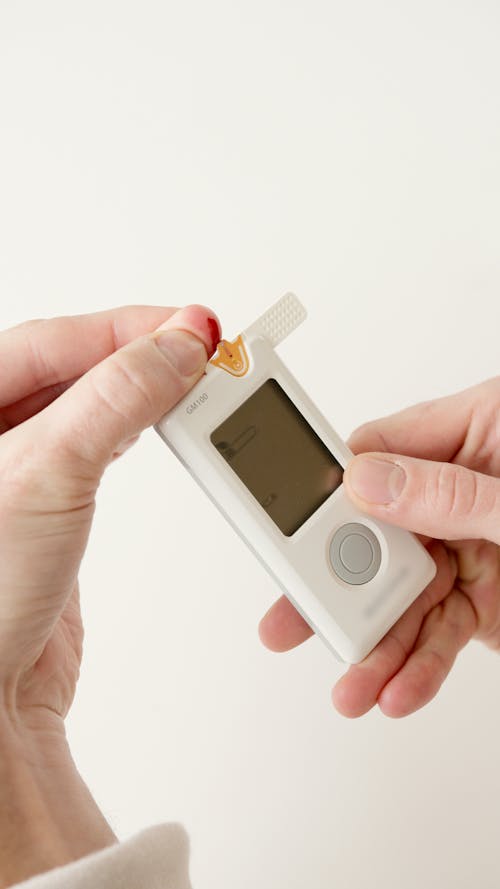Normal Blood Sugar Levels By Age (With Chart)


Understanding and maintaining normal blood sugar levels is essential for overall wellness as it plays a crucial role in myriad bodily functions - from fueling our brains to normal Blood Sugar Levels By Age.
Keeping blood sugar levels in check is vital for well-being as it powers our brains and bodily activities. Differences from normal can cause short-term symptoms like tiredness, dangerous conditions like diabetic ketoacidosis (DKA), and long-lasting illnesses such as Type 2 diabetes. The WHO states around 422 million people globally have diabetes, mainly living in lower-income countries with about 1.5 million deaths each year directly due to this disease.

Blood sugar or glucose is the main energy source for body cells coming from food we eat; once in our bloodstream insulin - a pancreatic hormone- helps get it into cells acting as fuel. "Blood sugar" refers to balancing these glucose levels which when imbalanced are either too low(hypoglycemia) or high(hyperglycemia); and can lead to health problems including diabetes making maintaining balanced glucose crucial not only in managing diabetics but also keeping overall metabolism healthy.
Testing of blood sugar levels is carried out in several ways:
1) Fasting Blood Sugar Test (FBS): Measures glucose after an overnight fast, usually 8-12 hours without food or drink except water.
2) Random Blood Sugar Test: As the name implies, it's done at any time regardless of when you last ate.
3) Oral Glucose Tolerance Test (OGTT): Checks your body’s response to a sugar solution by analyzing blood samples at various intervals following its consumption; hence evaluates metabolic handling capacity for sugars.
4) Hemoglobin A1c test: Gives a broader picture showcasing average glycemic control over the past two to three months by identifying the percentage of red cells with attached glucose molecules.
5 ) Continuous Glucose Monitoring Systems(CGMs ): Real-time tracking devices implanted underneath the skin offering continuous estimates regarding changing sugar trends—highly beneficial especially for Type I Diabetes management involving intricate insulin dosing decisions that require vigilant monitoring.
Each method has its unique nuances and the choice should be made under professional medical advice considering personal health conditions as well as individual preferences ensuring a personalized treatment approach.
Monitoring blood glucose levels in newborns is crucial. The American Academy of Pediatrics (AAP) says the normal range for this age is 40-150 mg/dL, though factors like the baby's weight and if they were born full-term or prematurely may cause slight variations. Blood sugar over 150 mg/dL requires medical attention.
Remember that a temporary drop in a neonate's blood sugar right after birth due to metabolic transition from womb to independent functioning is normal; early testing might worry parents with lower results. Thus, some experts suggest initial tests only after a few feeds, generally around two hours post-birth.
According to the American Diabetes Association, the normal fasting glucose range is 70-100 mg/dL. Blood sugar below 70 mg/Dl may indicate hypoglycemia (low blood sugar), while above 200 mg/dL could suggest hyperglycemia (high blood sugar). Various factors such as diet, activity level, and illnesses can cause these readings to vary.
Infant diets, especially breast milk, play a key role in glycemic metrics. As toddlers' activity and eating habits change, monitoring glucose levels becomes crucial to prevent both immediate symptoms like irritability or dehydration and long-term health issues like vision impairment due to diabetes. Early detection can guide management strategies reducing severe future consequences while enhancing growth during the rapid brain development stages of childhood. Regular pediatrician-coordinated screenings are vital.
Adolescence brings about major physical changes, affecting blood sugar levels. The American Diabetes Association advises that the normal fasting glucose range for adolescents should be between 70 and 130 mg/dL before meals, and could rise to less than 180 mg/dL after meals.
Puberty's growth hormones can cause insulin resistance, contributing to the rise of type-2 diabetes in teens. Poor diet and lack of exercise exacerbate this issue. Monitoring is key for early intervention as chronic high sugars are linked with long-term health issues like kidney disease and heart complications, while short-term effects include learning difficulties affecting academic performance. Hence, a balanced approach during adolescence ensures a seamless transition from pediatric to adult healthcare needs.
For healthy non-diabetic adults, blood sugar usually ranges between 70-100 mg/dL when fasting and under 140 mg/dL two hours after a meal. Maintaining this balance is key as it affects energy production, weight control, mood regulation, etc; higher than normal levels could indicate prediabetes - an early warning for Type-II diabetes that also increases heart disease risk.
Several lifestyle factors like diet composition rich in refined carbohydrates, sedentary routines including lack of physical activity & inadequate sleep patterns adversely influence glycemic parameters by fostering insulin resistance which could progress into chronic conditions if not addressed appropriately. Hence adopting healthier lifestyles encompassing balanced nutrient-dense diets along with regular exercise is recommended for managing adult glycemia alongside routine screenings, especially within high-risk groups.
For older adults aged over 60 years, some experts opine slightly relaxed standards primarily avoiding low sugar incidence thus ‘normal’ reading might extend until about 150 mg/ dL however this shall always be individualized based upon a person's overall health profile.
Age-related changes like slower metabolism and decreased muscle mass can cause insulin resistance, increasing Diabetes Mellitus type II risk. Abnormal glucose in the elderly can lead to increased frailty, infections due to weakened immunity, worsened cognitive impairments in Alzheimer's disease, and higher stroke incidences. Thus emphasizing preventive measures such as healthy food choices with moderate exercise alongside personalized medical interventions where necessary keeping possible drug interactions from polypharmacy usage into account is essential.
|
Age |
Normal FBS |
Impaired FBS |
Diabetic FBS |
Normal RBS |
Impaired RBS |
Diabetic RBS |
Normal HgA1c |
Impaired HgA1c |
Diabetic HgA1c |
|
Neonates |
40-100 mg/dL |
>100 mg/dL |
<5.7% |
5.7-6.4% |
>6.5% |
||||
|
Infants/Children |
70-100 mg/dL |
<140 mg/dL |
<5.7% |
5.7-6.4% |
>6.5% |
||||
|
Adolescents |
70-100 mg/dL |
100-125 mg/dL |
>125 mg/dL |
<140 mg/dL |
140-199 mg/dL |
>199 mg/dL |
<5.7% |
5.7-6.4% |
>6.5% |
|
Adults |
70-100 mg/dL |
100-125 mg/dL |
>125 mg/dL |
<140 mg/dL |
140-199 mg/dL |
>199 mg/dL |
<5.7% |
5.7-6.4% |
>6.5% |
|
Older Adults |
70-100 mg/dL |
100-125 mg/dL |
>125 mg/dL |
<140 mg/dL |
140-199 mg/dL |
>199 mg/dL |
<5.7% |
5.7-6.4% |
>6.5% |
Maintaining optimal blood sugar is key for overall health as deviations can lead to acute symptoms and long-term complications like diabetes. Blood glucose ranges vary by age: neonates (40-150 mg/dL), children/teens (70-150 mg /dl) while adults should have 70 -100mg/Dl when fasting or up to140mg post-meals; older people may reach up to 150. Dietary intake, physical activity level, and puberty hormones could cause fluctuations in these readings. Abnormal glucose levels risk growth in youths and cardiovascular/metabolic illnesses in adults especially the elderly. Regular screenings and personalized treatment plans are advised globally.
For newborns up to 4 weeks old, the normal blood sugar levels should be between 40-150 mg/dL. For little ones from one month to twelve years, a healthy level is between 70-150 mg/dL. Teens aged thirteen to eighteen also need to keep their glucose in this same range.
In older adults over 60, the normal blood glucose range can be a bit higher than in younger people. The American Diabetes Association suggests their values could go up to ~150 mg/dL; though personalized treatment plans may recommend different goals depending on individual health conditions and risks.
For most people, a good blood sugar level is between 70 mg/dL to 100 mg/dL when you haven't eaten and up to about 140 mg /dL roughly two hours after meals. The American Diabetes Association suggests these levels should ideally be kept within range, yet remember everyone's health is different so personal targets may vary and should always be set with professional medical help.
For non-diabetic adults, regular post-meal blood sugar levels should be under 140 mg/dL about two hours after eating. However, these 'normal' values can slightly vary amongst individuals based upon their unique metabolic responses or specific health conditions; hence individualized targets ascertained through professional medical consultations shall always hold precedence.










Plus get the inside scoop on our latest content and updates in our monthly newsletter.